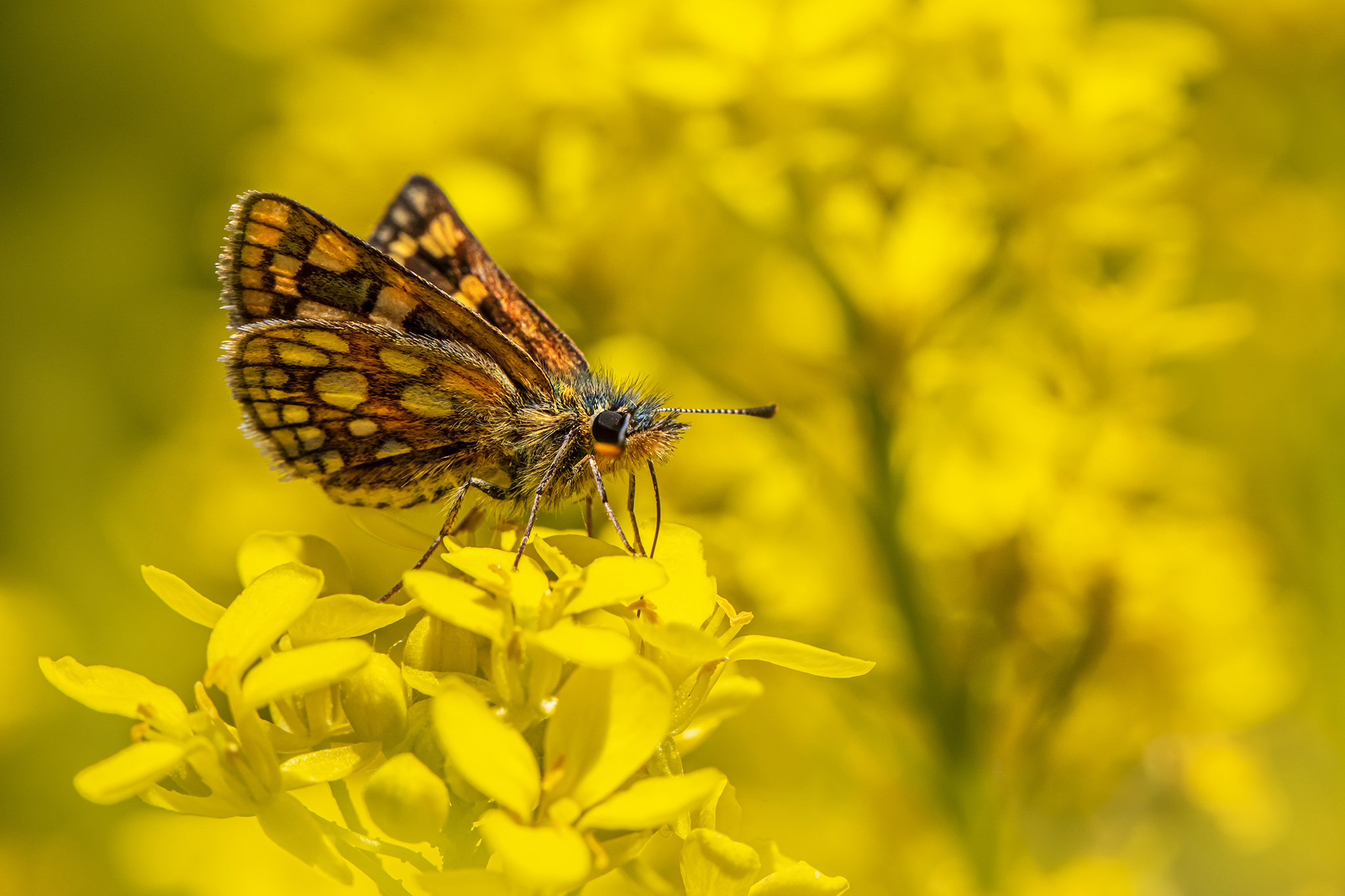The Chequered Skipper (Carterocephalus palaemon) is a small but distinctive butterfly belonging to the Hesperiidae family. Found in various regions across Europe and parts of Asia, it is known for its checkered wing pattern and specific habitat preferences. Here’s a closer look at this interesting butterfly:
Description
- Wingspan:
- Typically ranges from 24 to 28 millimeters.
- Appearance:
- Forewings: The forewings are dark brown to black with a striking pattern of orange-yellow spots arranged in a checkerboard-like fashion. This pattern gives the butterfly its common name.
- Hindwings: The hindwings are similarly patterned, with a combination of dark brown and orange spots, though the pattern is more diffuse.
- Underside: The underside of the wings is lighter, with a mixture of pale yellow and brown, and has a more muted checkered pattern.
Habitat
- Distribution:
- The Chequered Skipper is found in a variety of locations across Europe, including the United Kingdom (particularly Scotland), and in parts of Asia, such as Siberia and the Far East. It has a patchy distribution and is considered rare in some areas.
- Preferred Habitat:
- It favors open, sunny habitats with a mix of grasses and wildflowers. Common habitats include woodland clearings, grassy meadows, and areas with scattered trees or shrubs.
Behavior and Ecology
- Flight Period:
- The Chequered Skipper typically flies in late spring to early summer, with adults on the wing from May to June, depending on the region.
- Feeding:
- Adults: Feed on nectar from a variety of flowers, including buttercups, bluebells, and violets.
- Larvae: The caterpillars feed primarily on grasses, particularly purple moor grass (Molinia caerulea) and bents (Agrostis spp.).
- Reproduction:
- Females lay eggs individually on the leaves of grasses. The larvae are green with faint yellow stripes, camouflaging well among the grass blades. They create shelters by spinning grass blades together with silk, where they hide during the day.
Conservation Status
- Threats:
- Habitat loss due to changes in land use, such as the decline of traditional woodland management practices and agricultural intensification, has led to population declines in some areas.
- Conservation Efforts:
- Conservation efforts focus on habitat management, including the restoration of suitable grassland and woodland environments. In the UK, for instance, targeted conservation work has been successful in stabilizing and even increasing populations in certain areas.
Interesting Facts
- Flight Pattern:
- The Chequered Skipper has a distinctive, rapid, and darting flight pattern, which can make it difficult to observe in detail while in motion.
- Historical Range:
- In the UK, the Chequered Skipper was once widespread but became extinct in England in 1976 due to habitat loss. However, it still survives in the western Highlands of Scotland.
Summary
The Chequered Skipper is a small, striking butterfly with a checkered wing pattern that makes it easily recognizable. It inhabits grassy, sunny areas and has specific habitat needs, relying on a mix of grasses and flowers. Though it faces challenges from habitat loss, ongoing conservation efforts aim to protect and restore its populations. Its quick, darting flight and vivid markings make it a fascinating species for butterfly enthusiasts and conservationists alike.
Views: 165
Subscribe to the newsletter:
